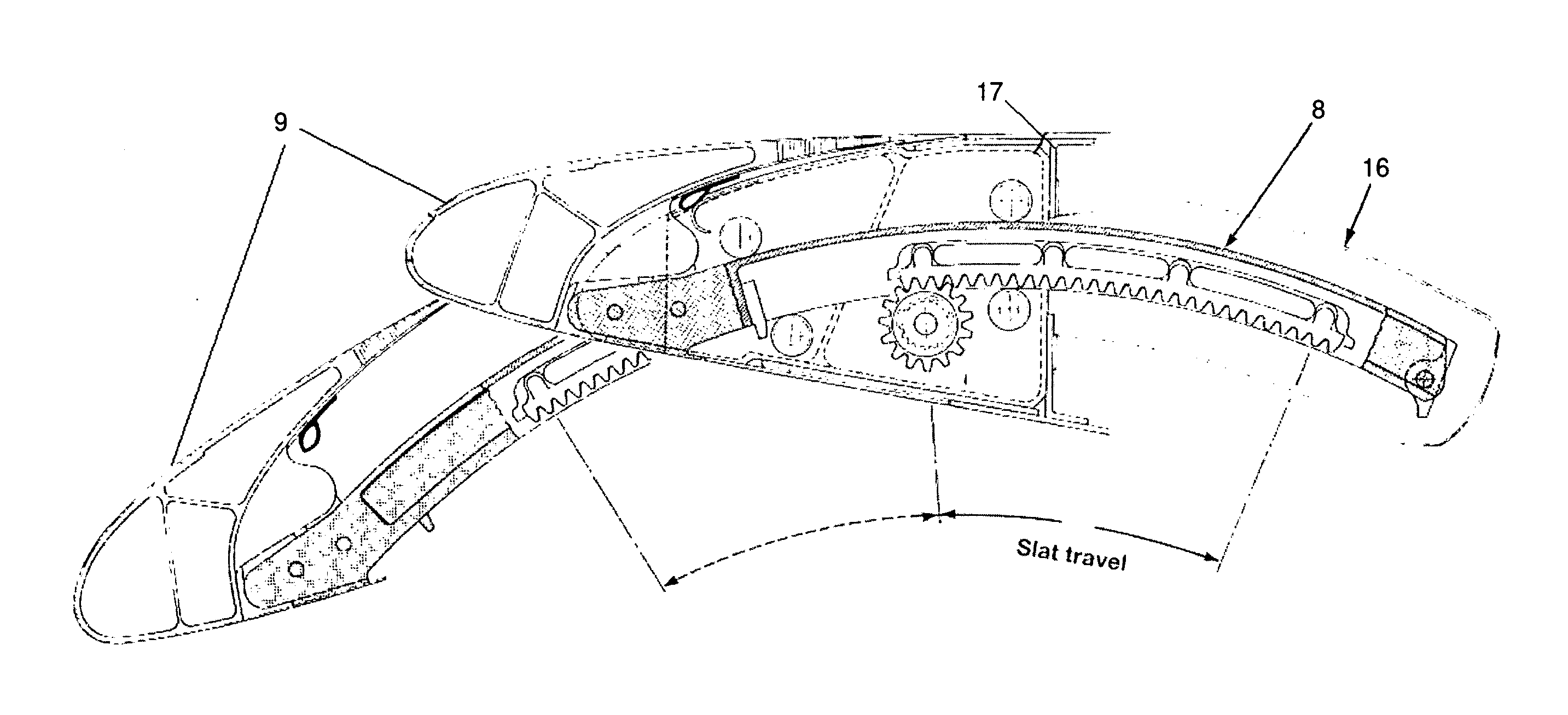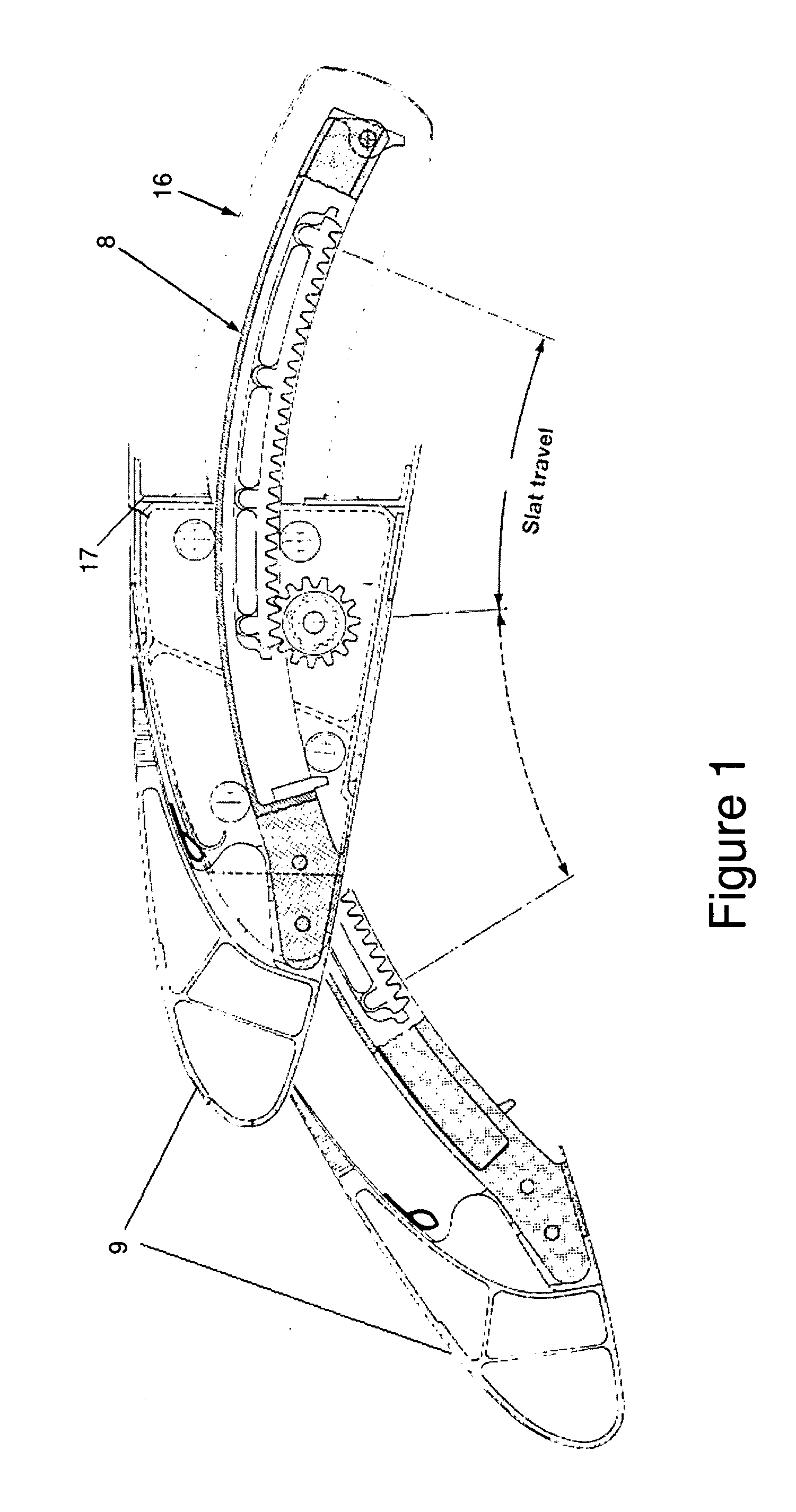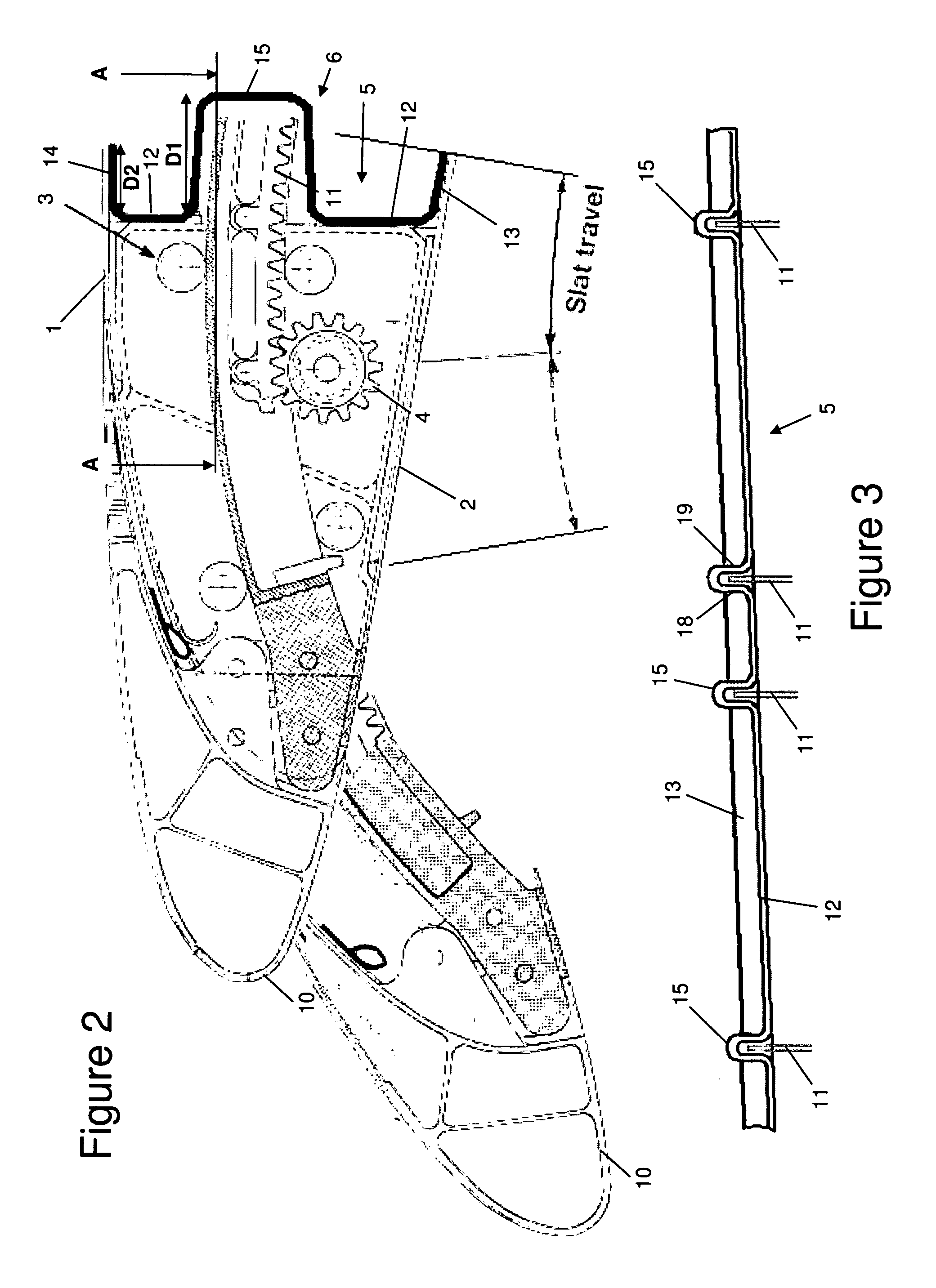Aircraft assembly and spar
a technology for aircraft and parts, applied in the field of aircraft assembly, can solve the problems of high scrap level, notoriously expensive manual process, and increased cost, and achieve the effect of maintenance, reducing the cost of production, and increasing the cost of production
- Summary
- Abstract
- Description
- Claims
- Application Information
AI Technical Summary
Benefits of technology
Problems solved by technology
Method used
Image
Examples
Embodiment Construction
)
[0038]The leading edge of an aircraft wing assembly is shown in FIG. 2. The wing has an upper cover 1; a lower cover 2 and a front spar 5 extending between them. A fuel tank is located behind the front spar. A slat track 11 carrying a slat 10 is driven by a pinion gear 4 along a curved path defined by a set of rollers 3 between a retracted low-lift cruise position, an intermediate take-off and climb position, and a fully extended high-lift landing position. FIG. 2 shows the slat in both extreme ends of its movement. As the slat track 11 moves, its rear end slides in and out of a slat track container 6 in the front spar 5.
[0039]Note that FIG. 2 is a schematic view only, illustrated as a variation on the conventional assembly of FIG. 1. Development in aircraft wing high lift devices are such that, from a slat configuration point of view, required sufficient aerodynamic performance can be achieved with reduced slat travel. Thus the slat track 11 (and its associated travel) has been tr...
PUM
| Property | Measurement | Unit |
|---|---|---|
| Angle | aaaaa | aaaaa |
| Angle | aaaaa | aaaaa |
| Angle | aaaaa | aaaaa |
Abstract
Description
Claims
Application Information
 Login to View More
Login to View More - Generate Ideas
- Intellectual Property
- Life Sciences
- Materials
- Tech Scout
- Unparalleled Data Quality
- Higher Quality Content
- 60% Fewer Hallucinations
Browse by: Latest US Patents, China's latest patents, Technical Efficacy Thesaurus, Application Domain, Technology Topic, Popular Technical Reports.
© 2025 PatSnap. All rights reserved.Legal|Privacy policy|Modern Slavery Act Transparency Statement|Sitemap|About US| Contact US: help@patsnap.com



